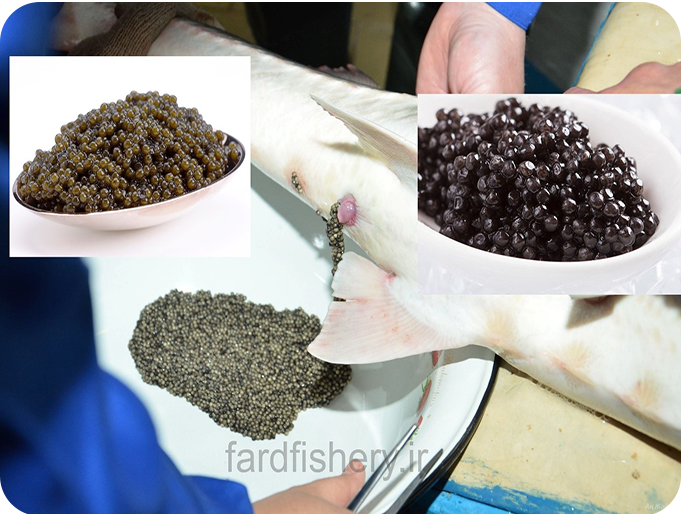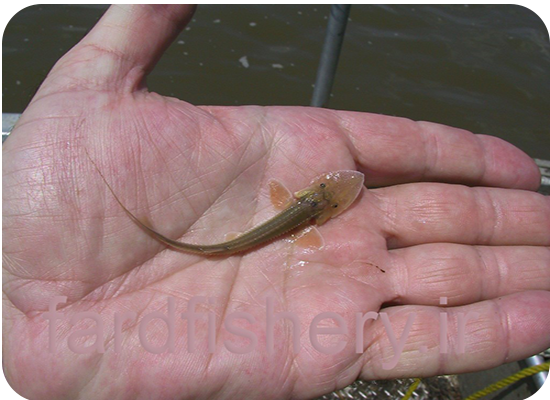History of sturgeon breeding in the world
In the late 1990s, there was very little information on Sturgeon breeding in breeding farms.
Breeding of sturgeon in breeding farms over one and a half kilograms for human consumption seems to be the primary objective of sturgeon breeding development. The former Soviet Union was the first country to take the first steps to raise Sturgeon at farming sites. The country concentrated its efforts on crossbreeding from the crossing of Beluga and male Sterlet and Siberian sturgeon. Subsequent successful efforts to breed sturgeon in France and the United States Major activity in France led to Siberian sturgeon, while the United States carried out extensive research on native species, especially Whitefish dice prioritized A transmontanus.
In recent years, especially after the sharp rise in caviar prices in world markets after 1995, sturgeon breeding has taken a new phase, with Italy, France, the United States and China leading the way. Unfortunately, the role of countries with a history of artificial breeding of sturgeon such as Russia, Iran, Romania, Poland, and so on is more limited. The decline in fishing stocks has led to a significant increase in world market demand for meat and caviar, as in 1999 a total of 1488 tonnes of meat and 6 tonnes of caviar were produced and sold in farms around the world. As a result, meat prices have fallen from $ 18 to $ 7 to $ 10 per kilogram of sturgeon, and have remained steady.
However, sturgeon breeding is rapidly developing in many countries such as China, Japan in Asia, Uruguay and Mexico in South America. The production of sturgeon in breeding environments increased from 150 tons in 1984 to more than 25,000 tons in 2007.
Worldwide production of sturgeon (ton)
| Country | 2001 | 2002 | 2003 | 2004 | 2005 | 2006 | 2007 |
|---|---|---|---|---|---|---|---|
| China | 0 | 0 | 9391 | 9729 | 13297 | 15034 | 21862 |
| Russia | 1800 | 2100 | 2208 | 2400 | 2470 | 2100 | 2030 |
| Italy | 700 | 1281 | 1000 | 1118 | 1158 | 860 | 750 |
| Poland | 300 | 300 | 300 | 300 | 250 | 300 | 250 |
| Germany | 0 | 0 | 0 | 37 | 22 | 228 | 228 |
| Bulgaria | 38 | 1 | 1 | 3 | 307 | 159 | 197 |
| France | 103 | 112 | 115 | 173 | 198 | 135 | 140 |
| Spain | 140 | 270 | 201 | 59 | 8 | 122 | 94 |
| Estonia | 0.5 | 0 | 15 | 59 | 75 | ||
| Uruguay | 4 | 6 | 12 | 12 | 35 | 26 | 24 |
| Lithuania | 2 | 2 | 0 | 0 | 2 | 9 | 22 |
| Hungary | 3 | 13 | 12 | 12 | 21 | 21 | 21 |
| Lithuania | 5 | 10 | 8 | ||||
| Austria | 1 | 1 | 1 | 1 | 4 | ||
| Belgium | 1 | 1 | 5 | 5 | 10 | 0.5 | 0.5 |
| Romania | 1 | 0.5 | |||||
| Total | 3091 | 4087 | 13246 | 13855 | 17798 | 19064 | 25705 |
History of sturgeon breeding in Iran
However, the history of mass reproduction of sturgeons in our country for the purpose of conservation and restoration of reserves has a history of nearly 40 years. But more than two decades have not passed since the dice were raised in farming environments. The first sturgeon breeding began in 1969 at shahid Dr. Beheshti Fish Breeding Complex in Sangar dam with the efforts of the Dr. Yousefpour. Then, in 1374, it entered a new phase by implementing joint projects with Russian duckling experts.
The establishment of the International Dadman Sturgeon Research Institute has provided scientific and technical support and support to the industry and has been conducting numerous projects on sturgeon farming each year in collaboration with the Fisheries Executive. In this regard, all technical standards for sturgeon production have been obtained and the Iranian fishery has now issued the necessary licenses for the establishment of breeding and growing sturgeon farms in order to support the private sector; And it is trying to get the private sector in this sector, like warm water fish, cold water fish and shrimps being the one of the pioneeres in production.
Low construction costs, wages, and compared to other European and American countries, the optimal growth temperature of these fishes in our country, the existence of very fast growing species such as beluga, scientific and technical ability and expertise in this sector, are promising. The bright future lies in the sturgeon industry in our country.
Currently, several sturgeon farms are operating in Hormozgan, Gilan and Mazandaran province, and in addition to inland provinces such as Qom, Qazvin, Yazd, Fars and even southern provinces such as Khuzestan. The licensing process for other applicants is underway, and more than 100 licenses have been issued, including licensing, establishment and operation licenses with a capacity of over 4,000 tons of meat and 240 tons of caviar to the private sector.
At present, the main species of elephant breeding (Beluga) and Siberia are suggested and due to the rapid growth and production of baby fish, the sturgeon breeding centers and the high prices of meat, especially caviar, are well-bred in most sturgeon farms nationwide. Although the goal of the Iranian fishery is to use other fast-growing sturgeon species in this sector, at present the main development program is based on the rearing and breeding of Beluga.




